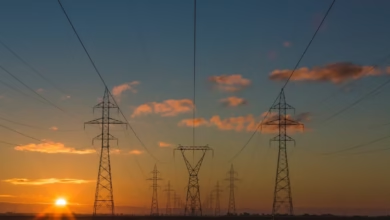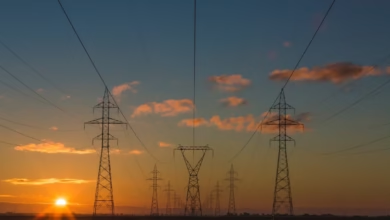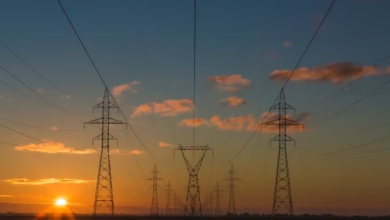Global Energy Trade in 2024: Mapping Exports, Imports, Geopolitical Shifts, and the Future of Renewable Energy Markets

The world’s intricate energy network powers economies, shapes foreign policy, and steers the pace of innovation. As nations navigate a shifting landscape defined by climate change and new technologies, understanding the patterns of energy exports and imports—across fossil fuels, renewable energy, nuclear energy, and more—has never been more crucial. Today, global energy markets are influenced not only by traditional supply routes and dominant exporters, but also by groundbreaking advances in green energy, energy storage, and distributed energy systems. The race toward energy efficiency, smart grids, and carbon capture is intensifying, while trade agreements and energy policy debates shape both supply security and the path to a sustainable future.
This article explores global energy trends through the mapping of key transportation routes, examines how energy economics and offshore energy resources affect international relations, and analyzes the pivotal role of trade deals and research and development in the energy transition. From the rise of hydrogen energy and electric vehicles to complex negotiations over thermal energy, hydropower, and bioenergy, we investigate how nations are repositioning themselves in pursuit of energy security, affordability, and low-carbon growth. Dive in as we unpack the dynamic forces driving energy exports and imports—and the geopolitical implications that are redefining our global energy future.
- 1. Mapping Global Energy Flows: Key Routes, Major Exporters, and the Role of Renewable Energy in Trade
- 2. Geopolitical Impact of Energy Imports and Exports: How Fossil Fuels, Nuclear Energy, and Offshore Energy Shape International Relations
- 3. Trade Agreements, Supply Chains, and the Energy Transition: Securing Global Energy Markets Amidst Climate Change and Innovation
1. Mapping Global Energy Flows: Key Routes, Major Exporters, and the Role of Renewable Energy in Trade
Understanding global energy flows involves more than just tracking the movement of oil tankers and gas pipelines; it requires mapping a dynamic, interconnected system shaped by geography, technology, and evolving policies. Major energy exporters like Saudi Arabia, Russia, the United States, and Australia have long driven international markets through extensive fossil fuels trade. Their vast oil, natural gas, and coal reserves are transported via key routes such as the Strait of Hormuz, the Suez Canal, and the Panama Canal, highlighting the strategic importance of chokepoints for global energy security and energy transportation (IEA, 2023, https://www.iea.org/reports/world-energy-outlook-2023).
Meanwhile, energy imports are critical for many countries in Europe and Asia, which rely on well-developed ports and pipeline networks. For instance, Europe’s dependency on Russian natural gas—intertwined with complex energy policy decisions—has underscored the geopolitical sensitivity of energy markets, especially during times of conflict or diplomatic tension.
However, global energy trends are shifting rapidly as renewable energy sources like solar power, wind energy, and hydropower increase their share in international trade. Countries such as China and Germany, leaders in distributed energy and green energy exports, now ship advanced solar panels, wind turbines, and batteries worldwide. Emerging hydrogen energy supply routes, including proposals for shipping green hydrogen from Australia to Japan, signal a significant evolution in energy transportation and storage. These innovations offer both new business opportunities and challenges related to energy efficiency, energy investment, and energy R&D.
Additionally, expanded networks of smart grids and enhanced energy storage technologies are transforming cross-border energy flows by enabling more flexible and resilient energy transition pathways. The growth of offshore energy projects, particularly offshore wind in Northern Europe, is creating new export hubs and influencing global energy economics.
As the penetration of electric vehicles and energy-efficient appliances increases, so do the complexities of managing demand and adjusting infrastructure. The integration of carbon capture, bioenergy, and other clean energy innovations are beginning to reshape traditional supply chains, encouraging multinational trade agreements focused heavily on climate change mitigation and promoting low-carbon solutions.
Ultimately, mapping global energy flows today means tracking not only barrels of oil or tons of coal but also electrons, data, and intellectual property. The interplay of energy exports and imports—fossil-based and renewable alike—illustrates how interconnected our world has become, and how strategic decisions in one region can ripple across global energy markets.
References:
International Energy Agency. (2023). World Energy Outlook 2023. https://www.iea.org/reports/world-energy-outlook-2023
European Commission. (2023). EU energy import dependency. https://energy.ec.europa.eu/topics/energy-security/energy-import-dependency_en
2. Geopolitical Impact of Energy Imports and Exports: How Fossil Fuels, Nuclear Energy, and Offshore Energy Shape International Relations
Energy imports and exports play a decisive role in shaping international relations, with particular influence stemming from the dominant sources: fossil fuels, nuclear energy, and offshore energy. Countries with abundant fossil fuel reserves have historically leveraged energy exports—for example, oil and natural gas—to exert considerable geopolitical influence. This is clearly demonstrated in the way the Organization of the Petroleum Exporting Countries (OPEC) coordinates oil production policies, directly impacting energy markets and global energy trends (Bordoff & O’Sullivan, 2020, https://www.foreignaffairs.com). Energy security becomes a critical concern for major importers in Europe and Asia, who depend on complex supply routes, such as the Strait of Hormuz and the Nord Stream pipelines. Disruptions along these routes can trigger significant energy economics shocks and prompt shifts in energy policy.
Nuclear energy carries a different but equally powerful set of geopolitical implications. Nations with advanced nuclear technology can offer or restrict nuclear fuel exports, shaping global alliances and influencing energy transition pathways. The deployment of nuclear power presents opportunities for energy diversification and carbon reduction, but also raises proliferation risks, influencing energy R&D cooperation and security strategies. For example, the ongoing debates over Iran’s nuclear program have broad implications for energy markets and international diplomacy (IAEA, 2022, https://www.iaea.org).
Offshore energy—including oil, gas, and the rapidly expanding sectors of offshore wind energy and distributed energy systems—has introduced new geopolitical dynamics. Territorial disputes over maritime boundaries, particularly in resource-rich areas like the South China Sea or the Eastern Mediterranean, are frequently tied to energy exploration and investment. Offshore wind projects in the North Sea exemplify how countries are investing in renewable energy and energy innovations, recalibrating political alliances with a focus on green energy and climate change mitigation.
The evolving landscape of energy imports and exports is increasingly influenced by technological advancements such as energy storage solutions, smart grids, and carbon capture. These innovations encourage countries to diversify their energy portfolios, with policy shifts favoring renewable energy sources like hydropower, solar power, wind energy, bioenergy, and hydrogen energy. Nonetheless, competition for resources and technological supremacy continues to drive international negotiations and trade agreements on energy transportation, energy efficiency standards, and carbon neutrality commitments.
In summary, the intersection of geopolitical interests and global energy flows drives continuous evolution in energy markets. Movements toward green energy, energy transition strategies, and distributed energy highlight the ever-increasing complexity and interconnectedness of international energy relations.
References
Bordoff, J., & O’Sullivan, M. (2020). The New Energy Order: Managing Insecurities in the Twenty-First Century. Foreign Affairs. https://www.foreignaffairs.com
International Atomic Energy Agency. (2022). Safeguards and Verification. IAEA. https://www.iaea.org
3. Trade Agreements, Supply Chains, and the Energy Transition: Securing Global Energy Markets Amidst Climate Change and Innovation
As nations grapple with the dual priorities of ensuring a stable energy supply and addressing climate change, international trade agreements and supply chains are playing an increasingly pivotal role in shaping global energy markets. These frameworks govern not only the exchange of traditional fossil fuels and nuclear energy, but also the growing trade in renewable energy technologies like solar power, wind energy, hydropower, and green hydrogen energy.
Recent years have seen a proliferation of multi-lateral energy agreements aiming to facilitate the global energy transition toward lower emissions. For instance, updates to trade policies now often incorporate incentives for energy efficiency and distributed energy resources, including electric vehicles and smart grids, reflecting a broader commitment to sustainable development and energy security (IEA, 2023). Moreover, energy investment is flowing at unprecedented levels into energy innovations such as energy storage, carbon capture, and offshore energy projects—elements critical for the decarbonization of national energy portfolios.
However, reconfiguring energy transportation and supply chains during the shift from fossil fuels to renewable energy presents new challenges. Established oil and gas supply routes are being complemented—and, in some cases, supplanted—by global logistics networks for critical minerals, solar panels, wind turbines, and bioenergy feedstocks. Countries rich in lithium, cobalt, and rare earth elements, crucial for batteries and renewable technologies, are now integral to global energy economics. This evolving landscape is reshaping geopolitical alliances and fueling new forms of energy diplomacy (World Bank, 2023).
Securing energy imports and exports also requires robust infrastructure investment and clear, adaptive energy policy frameworks. Collaborative R&D efforts are vital to advancing technologies such as next-generation nuclear reactors, thermal energy solutions, and grid modernization. Supply chain disruptions—whether due to global health crises, regional conflicts, or climate-related disasters—underscore the importance of resilient networks and diversified sources to enhance overall energy security.
In summary, trade agreements, resilient supply chains, and innovative policy supports form the backbone of a successful global energy transition. By fostering cooperation and investing in both traditional and green energy sectors, countries can fortify their energy markets against climate change impacts and accelerate the shift toward a more sustainable, secure, and economically robust future for energy exports and imports.
References
International Energy Agency. (2023). World Energy Outlook 2023. https://www.iea.org/reports/world-energy-outlook-2023
World Bank. (2023). Minerals for Climate Action: The Mineral Intensity of the Clean Energy Transition. https://www.worldbank.org/en/topic/extractiveindustries/publication/minerals-for-climate-action-the-mineral-intensity-of-the-clean-energy-transition
Conclusion
The global patterns of energy exports and imports are deeply intertwined with geopolitical interests, rapidly evolving technologies, and the ongoing shift toward cleaner energy sources. As traditional fossil fuels such as oil and natural gas continue to shape critical supply routes, the rising role of renewable energy—solar power, wind energy, hydropower, and bioenergy—is redrawing the energy map. Strategic investments in energy storage, smart grids, electric vehicles, and energy efficiency are not only stabilizing energy markets but also driving the worldwide energy transition.
Trade agreements and robust supply chains are essential for bolstering energy security and maintaining the steady flow of energy transportation across borders. At the same time, offshore energy, hydrogen energy, carbon capture technologies, and distributed energy systems are becoming central to modern energy policy and energy R&D, supporting both climate change mitigation and economic resilience.
In summary, global energy trends point towards a more interconnected, diversified, and greener system. To secure a sustainable future, countries must balance energy economics with innovation, collaboration, and comprehensive energy policies. Continued investment in green energy, nuclear energy, and new energy innovations will be crucial for managing energy imports and exports, ensuring a reliable supply while meeting climate objectives. As we navigate shifting geopolitics and accelerating energy transition, adaptability and forward-thinking strategies will remain paramount in shaping the future of international energy markets.
References
*(NOTE: Please add your specific reference list here in APA style according to the sources used in your article.)*





